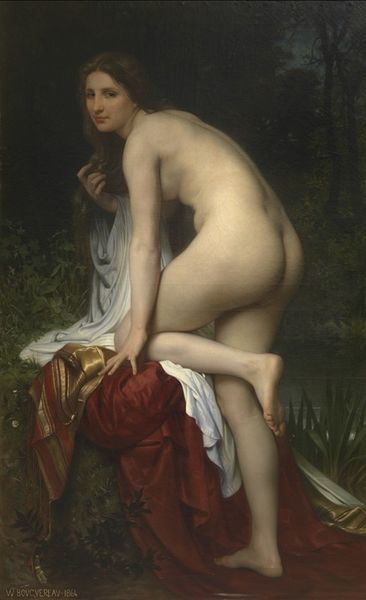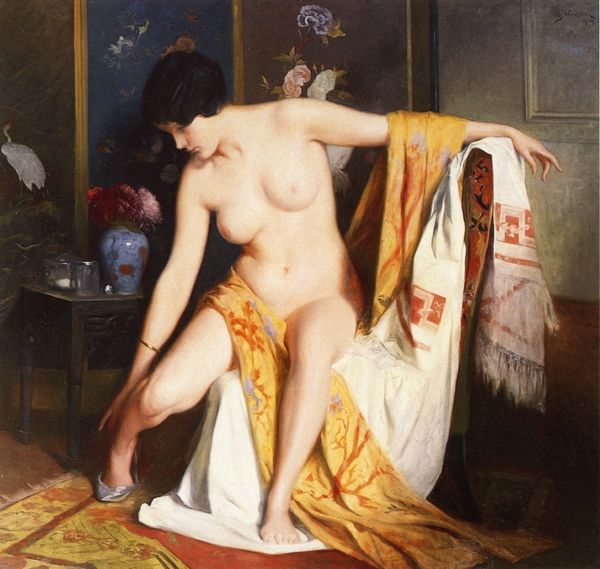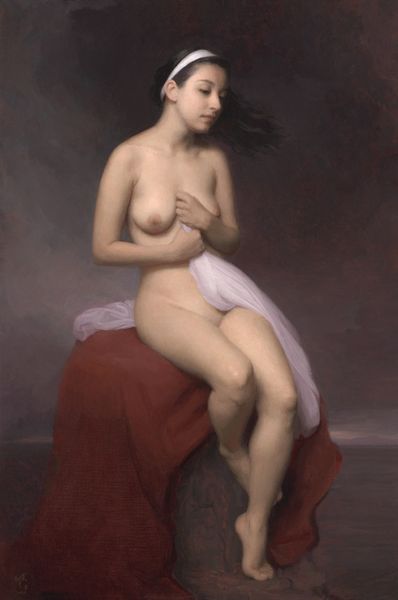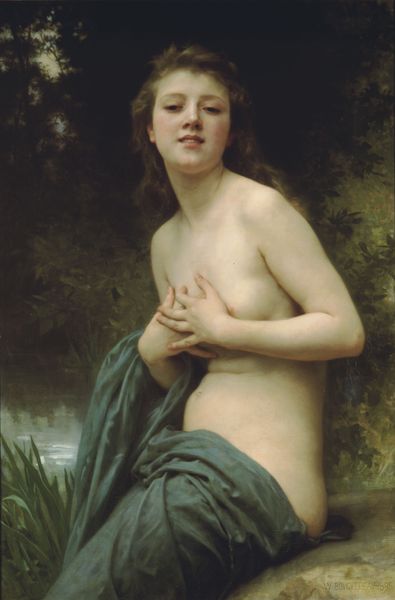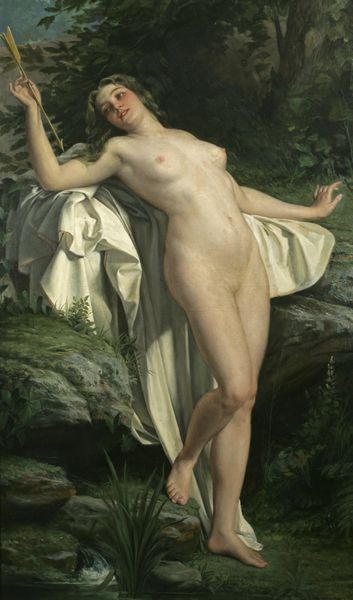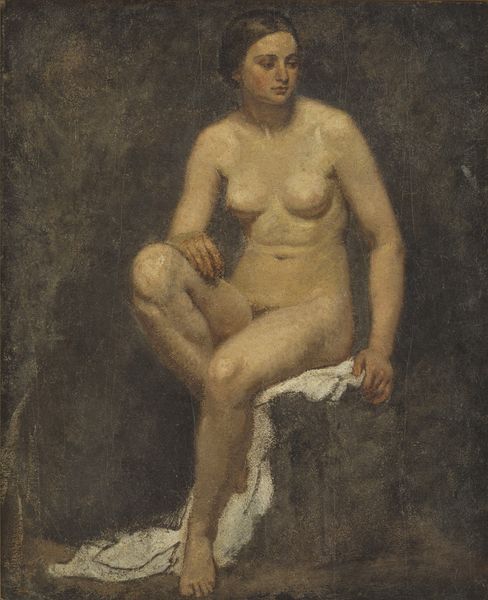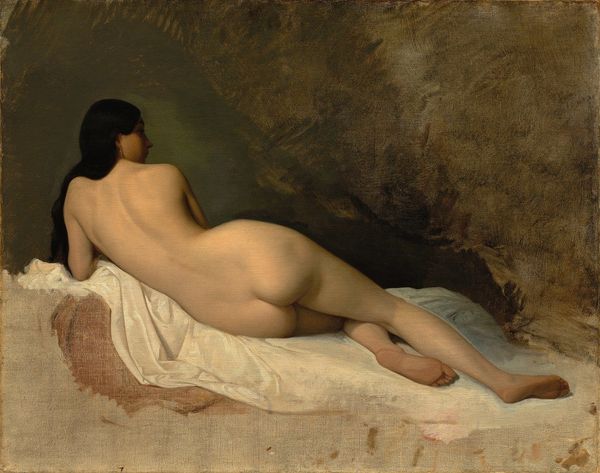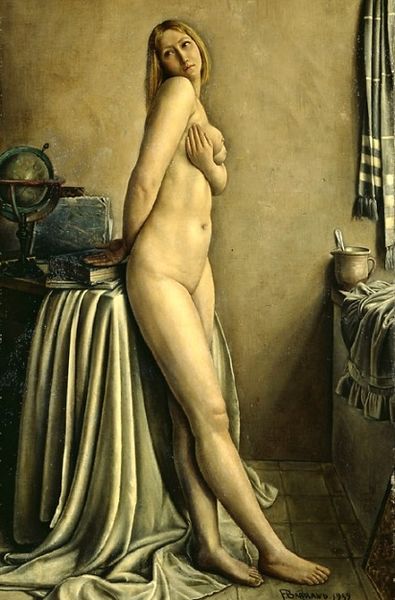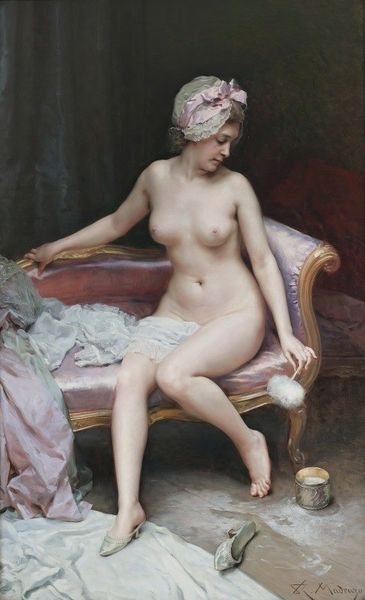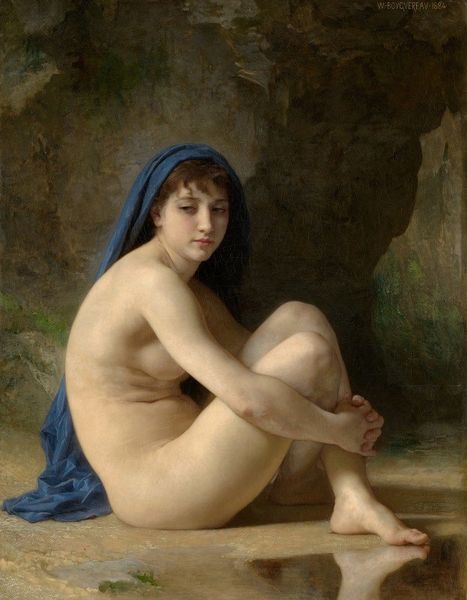
Dimensions: height 135 cm, width 96 cm, depth 12 cm
Copyright: Rijks Museum: Open Domain
Curator: Looking at this painting, "Susanna and the Elders" by Pierre van Hanselaere, made around 1820 using oil on canvas, I'm struck by how dramatically it depicts a biblical scene within a Baroque-Romantic sensibility. Editor: My first impression is unease. Susanna’s expression of fright and the lurid gaze of the elders peering from the foliage... it creates such a palpable sense of violation. There's almost a theatricality in the way their faces are rendered. Curator: Absolutely, the theatricality aligns with a moment where visual representations of women and virtue served a clear public function. Susanna's predicament—an innocent woman threatened by corrupt authority—was a potent subject for reinforcing moral codes in a period of societal upheaval. The male gaze codified by a painting served the authorities well at the time. Editor: The choice to depict the elders practically hidden feels symbolic. They aren't presented as figures of overt power, but rather as a lurking threat within the established order. Their leering faces contrast sharply with Susanna's vulnerability, heightened by the purity of her partially draped form. Even the garden imagery contributes to this feeling: gardens have symbolized innocence since the Middle Ages, which only reinforces Susanna’s purity, which the elders seek to destroy. Curator: And we see how the Romantic elements intensify the emotional charge. Consider the heightened chiaroscuro. This dramatic contrast between light and dark amplifies the tension and underscores Susanna’s isolation as much as the garden which also has religious contexts. Editor: It also makes me wonder how much the contemporary viewer at the time, regardless of gender, empathized with Susanna’s helplessness. It feels like the kind of image that reinforces existing beliefs but, on the other hand, shows a beautiful, innocent victim, and may provoke subconscious doubts about established norms. The light catches her skin so beautifully, creating a potent juxtaposition with the shadowed faces spying on her. Curator: Indeed. A work like this reveals the complex negotiation between art, morality, and the prevailing power structures in the post-revolutionary period in France, just before the Dutch Independence, while Hanselaere was living in the Southern Netherlands. It speaks volumes about the social function paintings assumed in those times. Editor: Reflecting on it now, beyond the disquieting subject matter, the enduring power of “Susanna and the Elders” lies in how it captures the perpetual struggle between innocence and corruption, making the symbolic dimension so pertinent, despite our current views.
Comments
No comments
Be the first to comment and join the conversation on the ultimate creative platform.
